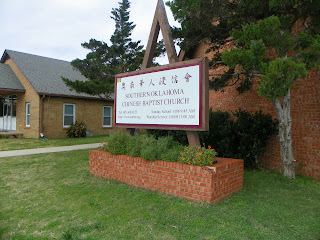Some of the greatest stories in history textbooks come from unimaginable events. Events that no one could predict and that no one wants to see happen again. The story of the bombing that shook Oklahoma City to its core on April 19, 1995 is one of those stories.
Kari Watkins was one of the first people approached to help create the Memorial and Museum. To continue teaching a story that is sixteen years old is something that she feels is important for everyone to hear.
“The memorial and museum are part of what came out of the mission statement,” said Director of the Oklahoma National Memorial and Museum, Kari Watkins, “it defines the survivor tree should be kept, it defines an education center, it defines different elements of this place.”
Assistant principal at Ponca City High School and former assistant principal at East Middle School in Ponca City, Paul McQueen, agrees with Watkins, especially in terms of students. “It’s important for us because, they weren’t alive then. The first year we took them they would have been born in ’92 or ’93. So they weren’t old enough to remember it.”
One teacher at East Middle School, Joanne Minor, agrees with McQueen, saying, “this is an important lesson in what rights we had before this occurrence and after. Most students do not understand the impact it had on our lives. Before the bombing, security at airports were not what they are today. Students also need to know there are people, not foreign threats, but our own citizens, who will do harm if they have different views about government and policies. Students gain an understanding about home grown terrorists and also about tolerance.”
These are exactly the lessons that Watkins and the other people who helped to create the museum and memorial had in mind.
“It is very clear to watch kids go through there and watch the light bulb go on, its like they get it,” says Watkins, “They get how senseless it was. They get the fact that it was a complete waste of time and human equity to go blow this place up. He got no where, except death.”
To this day, the museum continues to be a collecting facility. They are always rotating artifacts and adding new things into the museum to help add to the story.
“Our archives is the single largest collection of any one event. We’re very proud of what we’ve captured there and the stories we tell,” said Watkins.
The story they tell at the Oklahoma National Memorial and Museum is one that no Oklahoman will ever forget. Even sixteen years after the bombing, and for many years to come, people will continue to come to this place for “comfort, strength, peace, hope and serenity” just as the mission statement says.
Video Lead-in: Although the story of Timothy McVeigh and his actions is sixteen years old, it will never loose its importance to Oklahomans and Americans.


